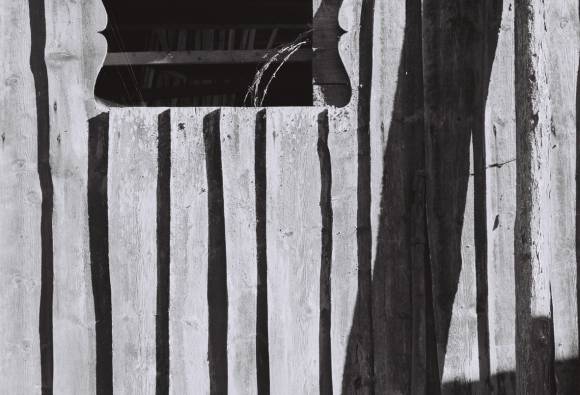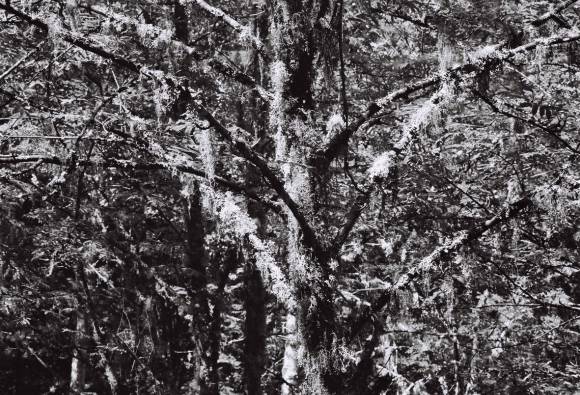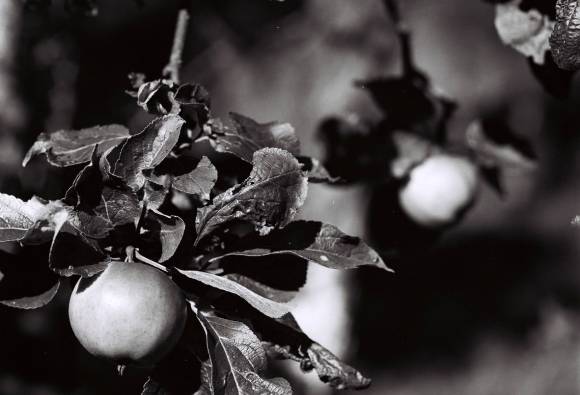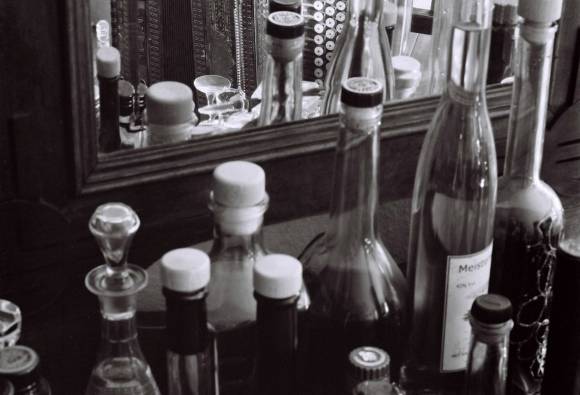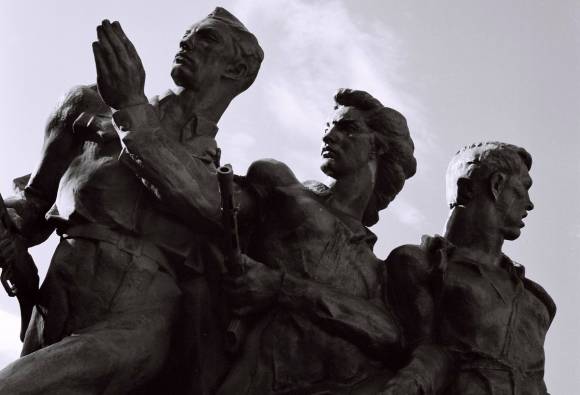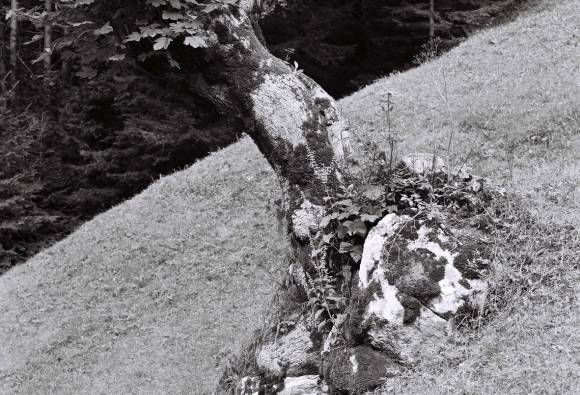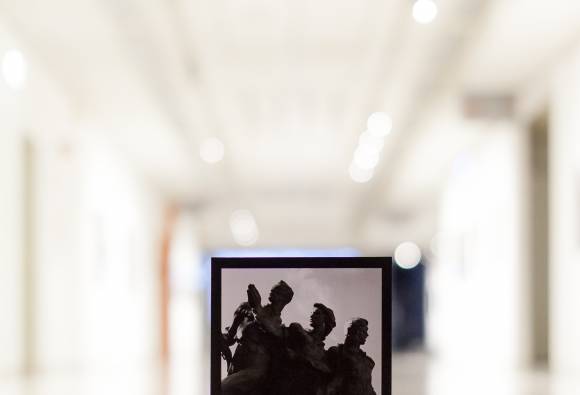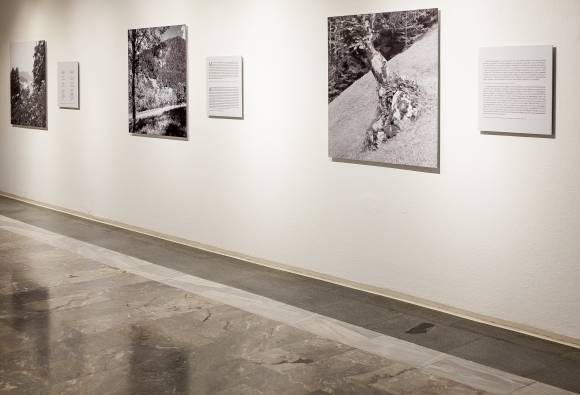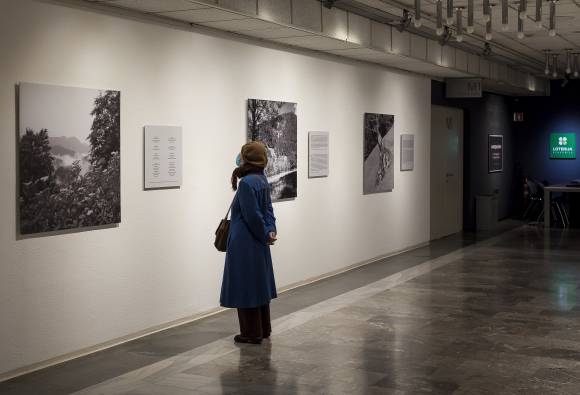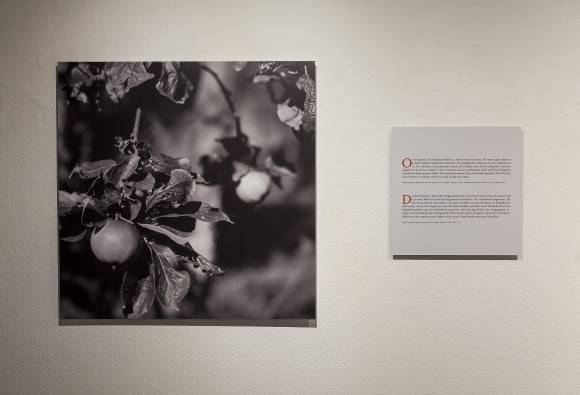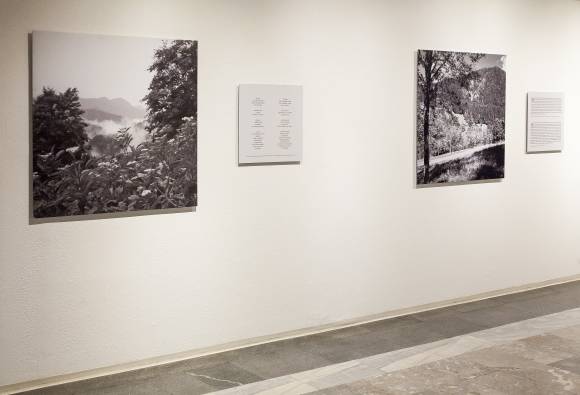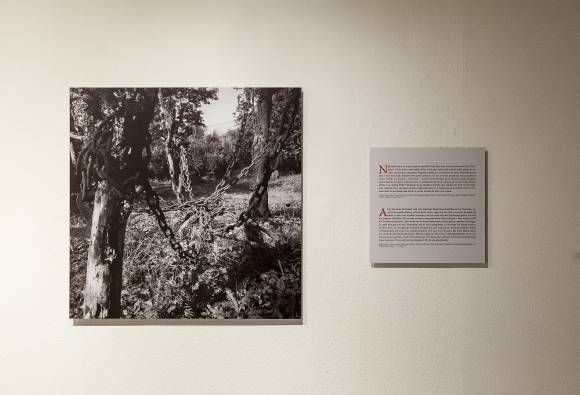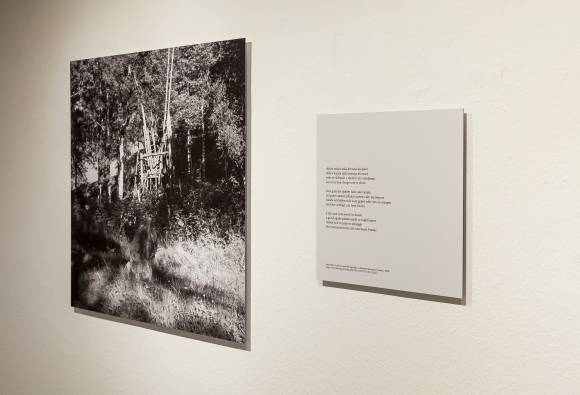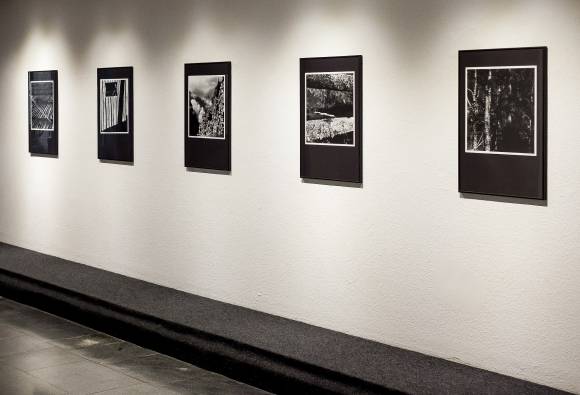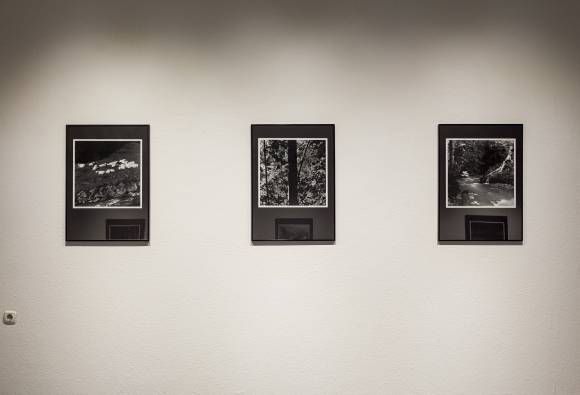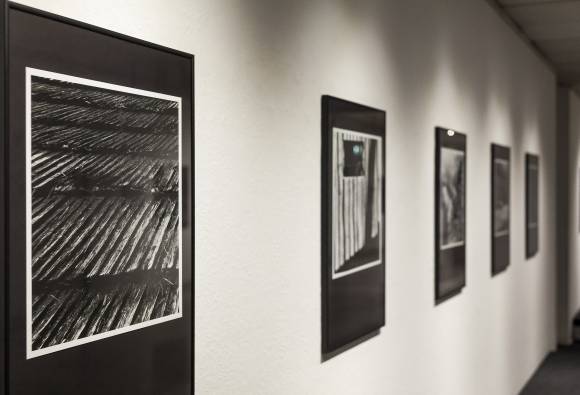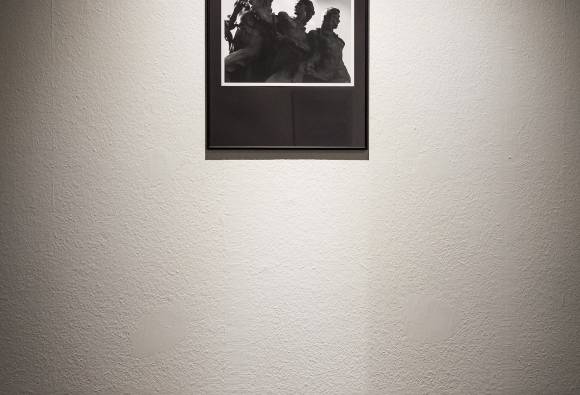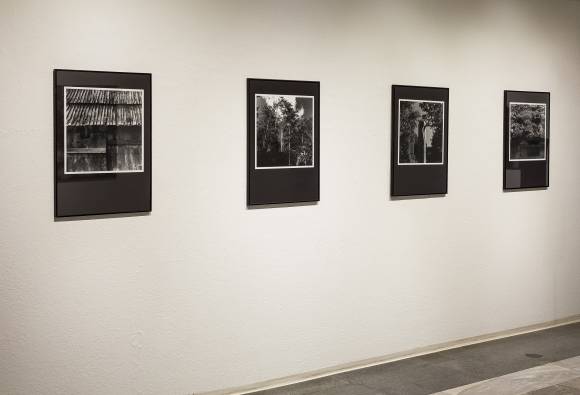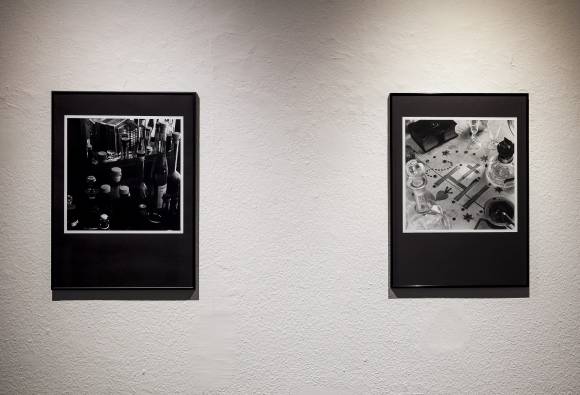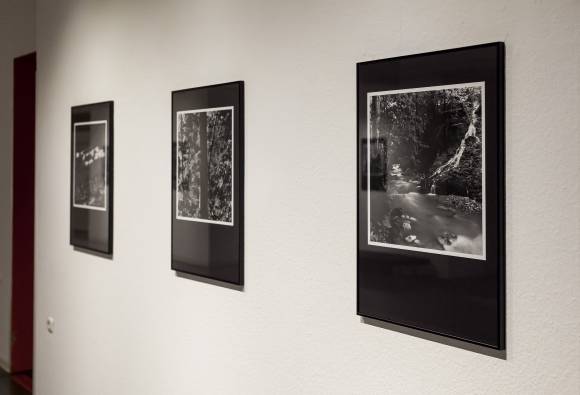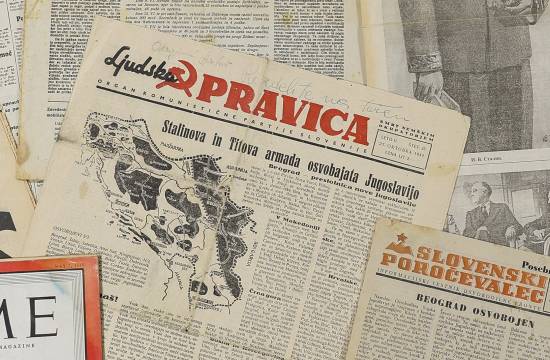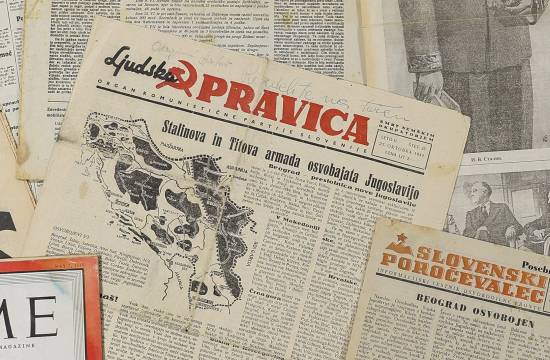
We need stories. We need stories to understand ourselves.
Salman Rushdie
The forest paths lead past places of death, Fritz was killed here by a falling branch, Grandmother knew, here three men were charred by lightning, in the Devil’s Clearing next to the Death Beech by the creek, the screeching girls in the stream on the Poset farm, where the dead wander and wail, the Wild Ravine where they found a skull. These are stories told by Maja Haderlap in Angel of Oblivion, a book that inspired Andrej Blatnik to take photographs of the writer’s valley – the Valley of Lepena (Leppen) that wends its way through the Austrian state of Carinthia – creating a series to which he could give no other title but Angel of Oblivion. Having read the book, the photographer decided to try to visualize all the dramas that happen there, he said. He wanted the pictures to be dramatic, to display the tenacity, the will to survive, perseverance, the struggle of man with nature. Also the partisans and conflicts. Joy, he added. The spectators thus see Lepena in the photos. And we also see ourselves. The sun's rays filter through the trees, mists drift down steep pastures, the words of Maja Haderlap, turning into reality, are tumbling over the meadows. The photographs convey the narratives of the writer and the people to whom this part of the world belongs. They whisper the photographer's story to us, the viewers, very carefully, unobtrusively, thus opening up space that allows us to listen to ourselves.
But let us go back to the Lepena Valley or ravine, as the locals call it, which runs from Eisenkappel to the foothills of Mount Peca (Petzen). It is only about ten kilometres long. It is caught between Mount Peca, soaring to well over two thousand metres, and the slightly lower Topica/Topitza and Olševa/ Ouschewa mountains. These secluded places, where no freshness seems to penetrate through the high peaks to the ravine, nor the mustiness of the outer world, have a history of resistance all of their own, a history that the official historical records would prefer to omit. If only possible, these records seek to blot out the partisan resistance movement joined by many Carinthian Slovenes, which took a heavy death toll on their families during WWII whilst also stigmatizing them after the war for their resistance against the Nazis and the German army. One can also write about trees politically and there are many trees in my book, read the words of Maja Haderlap. Stories lost in the woods – the forests that used to be dense in this part of the world until just a few years ago when natural disasters devastated the landscape and stripped clean the thickly wooded terrain – were found and preserved.
A black-and-white photograph shows a tree. Who knows how and, indeed, why here of all places, it has grown out of rocks on a steeply rising slope. The tree is straight, no sense of bending is felt. A nice photo. An idyllic shot of nature one could add and move over to the next photo. But, no. The moment we place it in a historical context we feel the drama of the Lepena Valley. That is why we stop. It stands for total resistance to gravity and everything. It stands for a crazy will to survive, says Andrej Blatnik about this unyielding tree.
In telling stories, Andrej Blatnik skilfully blends writing and photography; his photographs have been used in designing monographs, textbooks, manuals, anthologies, fiction books. Over the past decade he has been increasingly interested in Slovenian ethnic minorities, especially the remote places in the Raba region, the valley of Zilja/Gail, the Rabelj Valley (Val Rio di Lago), on the Croatian side of the Čabranka River. In the series of pictures featuring places that in Slovenia are little-known, almost disregarded, the photographer moves between creativity and reality, between aesthetics, knowledgeability and feelings. Especially his own, of course. It is also Blatnik’s Angel of Oblivion photographs that hover between self-expression and documentation, between relating information and conveying the photographer’s exceptional feel for the beautiful. His photographs often feature bold colours, but this time he thought them superfluous. He skilfully took advantage of the narrative force of grey tones, light fading into darkness, blackness dissolving into whiteness. And at times one can even sense a very, very gentle vibrancy that has slipped stealthily into this solemn environment.
In another photo, we see a roof, atop of which rises a tree canopy with the sky spreading above. The roof is dilapidated, the treetop ragged, the sky is disappearing into darkness. There are no people. And yet it is immediately clear that Andrej Blatnik is talking precisely about them, the extraordinary people in whose stories he found great fascination.
Meta Krese
Andrej Blatnik (b. 1963 Ljubljana) studied design and modern art at UK’s Open University between 1991 and 1994. A professional photographer since 1991, he has worked independently, as a self-employed professional in culture, since 1994. Actively pursuing a career in photojournalism since 2000, Blatnik is member of the Slovenian Association of Journalists. His photos have been published in numerous newspapers and magazines: Ambient, Viva, Albert, Cosmopolitan, Playboy, Elle, Gea, Atelje, Adria Airways In-Flight Magazine, Pri nas doma, Jana, Mama, Otrok in družina, Vrtnar, Rože in vrt, Kmečki glas, Življenje in tehnika, Zvon, as well as the supplements Objektiv, Polet, Ona… He has held a series of solo exhibitions in Slovenia and abroad. His previous shows at Cankarjev dom include: the 2009 Knapovske marionete (Marionettes from a Mining Town) solo exhibition, a series that has since formed part of Hrastnik Museum’s permanent collection, and the 2010 photo series Sečoveljske soline (Sečovlje Salt Pans) within the context of a museum exhibition.
Andrej Blatnik: Tracing Angel of Oblivion
Admission free

